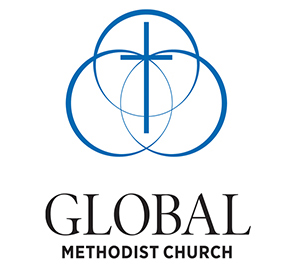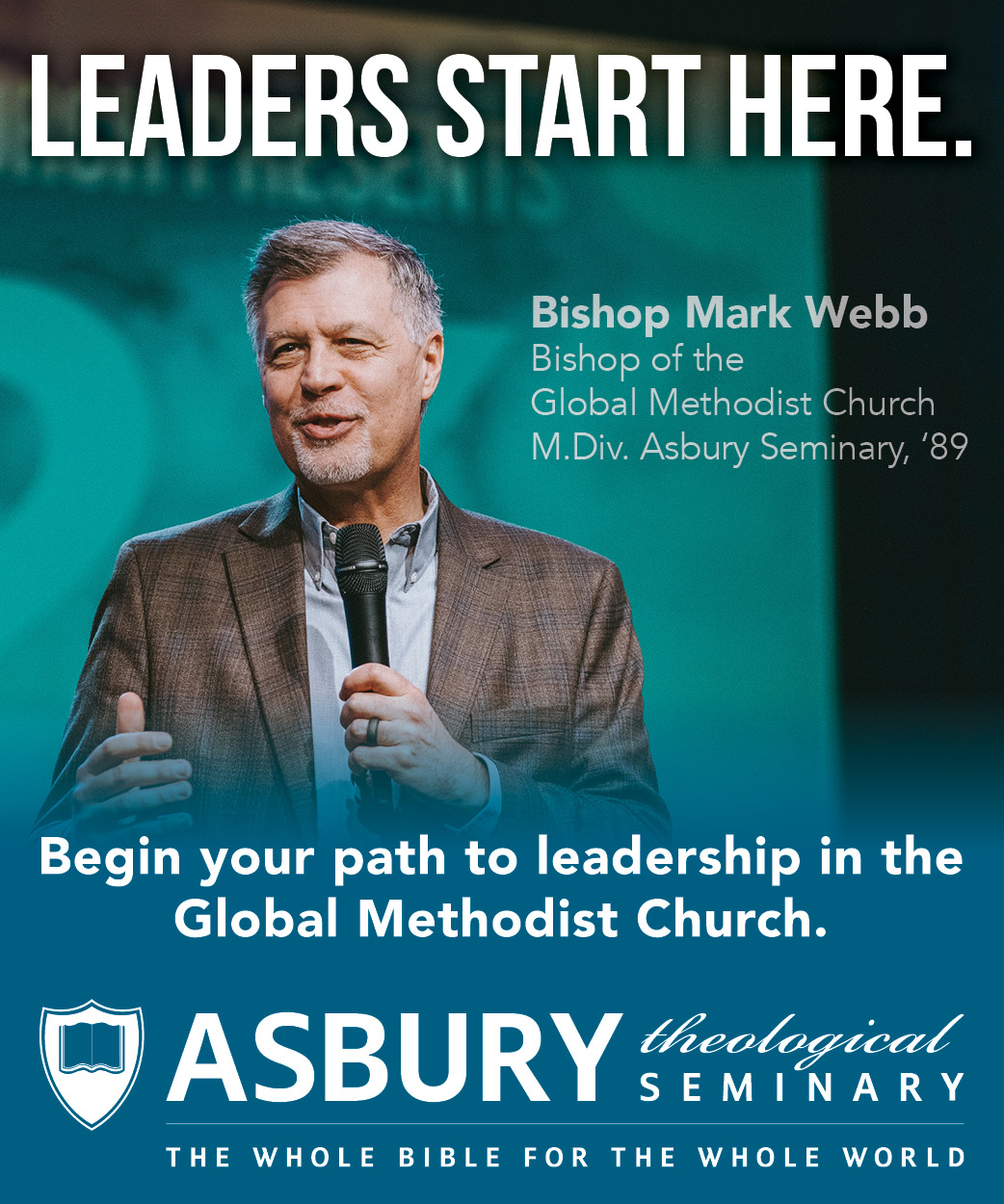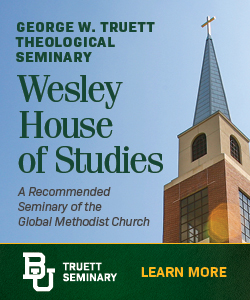Young People Drive Church Growth in Kyrgyzstan —
By Tim Tanton, KARA-BALTA, Kyrgyzstan (UM News) —
A mighty sound emanates from the small sanctuary where about 60 people, mostly youth and young adults, are praising God. They are packed shoulder-to-shoulder, lifting their voices exuberantly to the beat of a praise band.
The Holy Spirit is in this place, and songs will be sung, testimonies shared and a sermon preached over the course of the next two hours. The one-story building is home to the largest United Methodist congregation in Kyrgyzstan. Towering next to it is the frame for a two-story structure that will accommodate 200 or more people for worship on Sundays when it is complete in the fall.
For Alex Kutsov, 21, Livespring United Methodist Church in Kara-Balta is more than a place to worship.
“It’s my family,” he says. “… I love this church. I see every day how God blesses me and my family in this church.” He has been involved since childhood and plays drums in the worship band. “It is my service and my calling,” he says.
About 60 to 70 people are meeting at Livespring United Methodist Church, says the Rev. Artyom Golov, pastor. While the congregation is age diverse, at least half of the members are young people.
After the worship service, Kutsov and about 70 other young people from the church and community will drive to the nearby mountains to go sliding in the snow, sitting on empty pet food bags and other slick-surfaced items. Then they will grill chicken over a charcoal fire, hear a faith-sharing message, and continue the fun with archery and shooting.
The United Methodist Church is growing in Kyrgyzstan largely through its emphasis on young people. The denomination has six congregations in the Central Asian country, and it operates or ecumenically supports other ministries, such as a residence home for young men leaving orphanages, sports clubs and a computer club, and a gym where young people can work out and hear about faith.
Combined with six congregations in neighboring Kazakhstan, the Kyrgyzstan churches form the Central Asia District, overseen by the Rev. Dmitrii Lysin. The 12 churches and Bible groups comprise about 280 members. A visitor gets a sense of close-knit community among the members, as well as the spirit of a growing movement.
“All of our churches in Eurasia started after 1990,” says Bishop Eduard Khegay, whose Eurasia Episcopal Area includes Central Asia.
The churches do much with limited resources, in some cases even using their sanctuaries as dining areas, and members are hands-on when it comes to improving their space.
At Kainda United Methodist Church, for example, Lysin’s handiwork is evident in pews that he has worked on, as well as electrical wiring and even a refurbished billiards table. Villagers were puzzled by his decision to plant grass instead of potatoes in the church yard, but he had a bigger vision for providing recreational space for young people. He brings creative ideas to his work, having started a magazine for the district three years ago and now working on obtaining equipment for doing videos and podcasts featuring Methodist pastors.
Government rules limit the churches’ ability to share the gospel with local people and invite them to worship. “This is a Muslim culture,” Lysin says. Proselytizing is discouraged. “This is very hard.”
However, they can invite people to youth camps and other activities, and those interactions provide a foundation for building relationships. An annual English forum draws about 70 people and usually results in two or three baptisms, Lysin says. It’s like an evangelical camp, and nonbelievers are invited.
The church also holds seminars for Christian youth in the conference and three to four other camps for nonbelievers that attract about 120 people. A person can attend a camp and form relationships, and over time they may decide to attend a church service.
Lysin says that he came into the church through one of the camps 15 years ago. He and his wife, Elena, are first-generation Christians, as are the other members at Kainda United Methodist Church, he says.
The church has about 20 adults and 20 children on average, with more on holidays, says Elena Lysina, who helps lead the church and also works as a physical education teacher.
Kainda United Methodist Church grew out of an outreach to kids several years ago. Fyodor Seriakov, a lay person with a passion for youth ministry, began hosting gatherings of young people, many of whom came from difficult family situations. He gathered them for social and recreational activities, and the gatherings led to the start of church meetings.
Three of those young people are now adult members of the Kainda church women’s group, which Elena convened on a recent Saturday. Gathered in a semicircle, the women discuss prayer concerns and joys as well as relate news of their families.
The church’s work is generating favorable buzz in the community. It had once received negative feedback about being a sect, but now people are saying it’s a positive place and good for kids, says Olga Solomkina, a women’s group member. “We are really confident that God is helping us and that God is on our side,” she says.
“We have a very good church,” she adds. She is grateful for Dmitrii and Elena because they attract a lot of young people, many of whom have nowhere to go.
In nearby Bishkek, Anton Sharopin and his wife, Nadiya Sharopina, provide a ministry for young people who similarly have nowhere to go. Their program is for young men ages 18 to 23 who have left orphanages and need somewhere to stay as they transition into society. Most of the men come through referrals and, typically, a young person will stay for a year.
Last year, the couple hosted 11 kids, the maximum number they can accommodate in three rooms with bunk beds. Not all of the residents behaved ethically, and things were stolen, Sharopin says.
The men don’t have skills to live in society, he says, explaining that the orphanage system leaves them helpless because everything is done for them. Nadiya Sharopina says the young men need training to change their linens, take showers and even to read and write. Socialization is also an important part of the program.
“We do birthday parties for them,” she says. “We gather together and teach them how to wish each other well and sing a song.”
Sharopin says he and Nadiya don’t force them to go to church, but they give them Christ and hope they find a church.
Setting an example by faith is a common theme among pastors and leaders in the church in Kyrgyzstan. With the government restrictions, Lysin says he tries to witness through how he lives. He says people can see his life and he can tell them, “This is my faith.”
The personal witness can be powerful. Many church members and pastors share stories of transformative experiences that have become part of their witness to others.
Golov dedicated his life to God when he was 17. He had finished 11th grade and was working in an ice-cream factory when he nearly suffered an on-the-job injury. He was helping move iron gates and saw that one of the large gates was falling on top of him. He felt that he was pulled back by a strong hand, but when he looked back, he didn’t see anyone. The next day, he fell sick for a month and spent much of the time thinking about what had happened. One evening, as he was praying, he saw a light with mist fill his room.
He heard a voice filling his body: “Artyom, your life [was] finished that day. You must serve me.”
“I will,” Artyom replied. “I don’t know how, but I will.” The next day, he was healed, he says.
He went on to become a teacher — he teaches astronomy and geography at a nearby Christian school — and answered the call to ministry in 2009. He and his wife, Amina Golova, have a multifaceted ministry that includes not only working with young people but also helping teen girls in need. Amina herself was raised in a children’s home and came to Christ at age 16.
“I never dreamed to be a pastor,” Golov says. But, he says, “always in my heart, I want to serve God. I have in my heart a calling from God. … I can be a light here.”
Golov inspired Seriakov to pursue ministry with young people. Now 36, Seriakov has been working with young people for 18 years. He realized that if kids serve in church, they stay in church, and if they stay in church, they will love the church, he says.
It has not always been easy. Seriakov has been physically threatened for his work with young people, and at one point he had to meet with government officials in response to a complaint by a Muslim policeman who was upset about his son’s involvement in the church. But he says God has given him a heart for youth. “I really love to evangelize,” he says.
That is a calling that resonates with others also, such as Max Abramov, a young adult and leader at Kara-Balta United Methodist Church.
“I really love this church,” he says. “I love my pastor, brothers, sisters, every person here.”
He wants to work with young people, who account for half or more of the people in the church.
“I want young people to really love God and go after Him, go after Jesus,” Abramov says. “I want young people to dedicate their life to Jesus.”
Tim Tanton is chief news officer of United Methodist Communications and director of UM News. Photo: Eugenia Tachieva (left) and Irina Tachieva raise their hands in praise during worship at Livespring United Methodist Church in Kara-Balta, Kyrgyzstan. Photo by Mike DuBose, UM News.






0 Comments